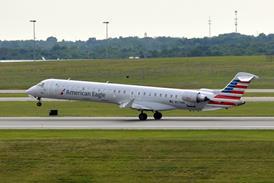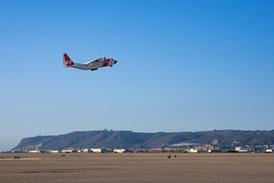GRAHAM WARWICK / WASHINGTON DC
Mounting financial hurdles have forced the company to delay debut until July 2003
Eclipse Aviation has restructured its Eclipse 500 personal jet programme to reduce the funding required to reach first flight, now set for July 2003. The move reflects challenges the company faces raising financing in the current US economy.

The restructuring slips the first flight by only a month, but delays production of two further flying prototypes and two structural test articles by six months. US certification also slips six months to December 2003 and first delivery by five months to January 2004.
Eclipse has also taken over responsibility for development and certification from Williams International in a move that will cut the overall cost, says president and chief executive Vern Raburn. Previously Williams was to hand the programme over after certification.
Under its original schedule, Eclipse planned to build eight airframes over six months, including three "beta test" aircraft for pre-delivery testing. The new schedule delays completion of seven of the airframes until after first flight, when more funding is due.
Raburn says the decision to bring forward transition of the programme to Eclipse's Albuquerque, New Mexico, plant reflects the progress made so far. Awarding Williams a contract to design, develop and certificate the aircraft "was a start-up strategy to address the classic failure modes," he says. "But we have achieved what we set out to do."
Only 11 of the 123 people working on the Eclipse 500 programme at Williams' Walled Lake, Michigan, are employed by the engine maker, says Raburn. Williams will continue to supply the aircraft's EJ22 small turbofans, flight testing of which is to begin in the fourth quarter on a Rockwell Sabreliner testbed.
Eclipse, meanwhile, has made refinements to the aircraft's design, reflected in a full-scale mock-up unveiled at this week's AirVenture 2001 show in Oshkosh, Wisconsin. The windscreen has been redesigned to save weight, vertical tail reshaped and horizontal tail enlarged, and a tail-mounted clamshell speedbrake added.
Engines have been moved forward to separate primary structure from the rotorburst zone, pylons and rear fuselage reshaped to reduce drag, and wing and fairing changes to improve aerodynamics and reduce weight.
The cockpit now features dual flat-panel primary flight displays as standard, plus a large-format multi-function display, keyboards with cursor controls, and sidesticks. The cabin has been redesigned, including switching the entry door to the left side, to provide increased room and "semi-club" seating for three passengers, plus pilot.
Source: Flight International























